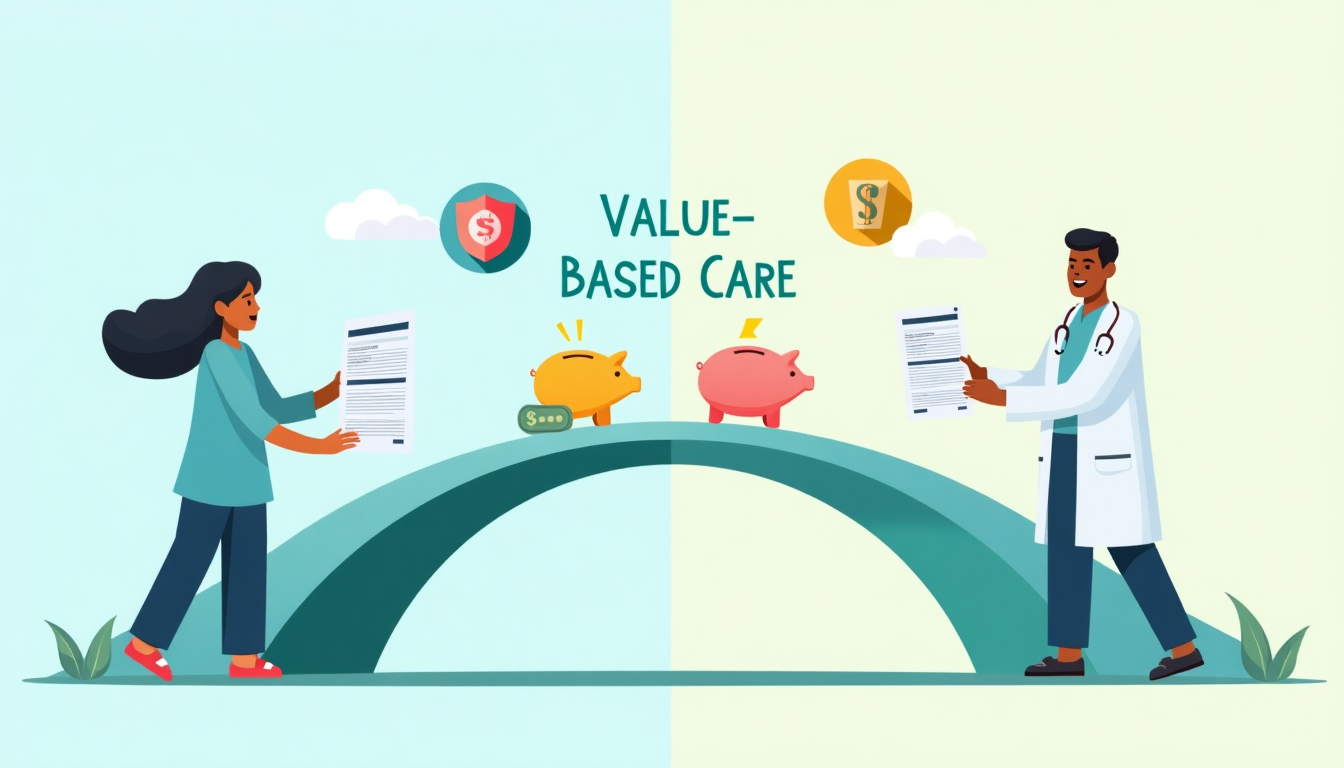How to Use Value-Based Care to Lower Your Medical Bills: A Patient’s Step-by-Step Guide
By Susan McGroddy, Healthcare Policy Analyst
Introduction: How Healthcare’s $43 Billion Shift Saves You Money
Imagine paying your mechanic based on how well your car runs—not how many repairs they perform. That’s the core idea behind value-based care (VBC), a payment model transforming American healthcare. As a policy analyst specializing in medical billing systems, I’ve seen how this shift helps patients reduce costs while improving care quality.
Consider these key changes:
- 40% of Medicare payments now flow through VBC models[1]
- Patients in these programs save an average of $2,400/year through better chronic disease management[2]
- 48% of physicians report challenges adapting to new requirements[3]
While the transition isn’t seamless, this guide will show you how to navigate the $43.4B healthcare transformation[4] to your advantage.
What Is Value-Based Care?
The Flaws of Fee-for-Service Care
Traditional healthcare pays providers per test or procedure, which:
- Prioritizes quantity over quality
- Leads to 25% of Medicare patients being readmitted within 30 days[2]
- Increases your risk of surprise bills
How Value-Based Care Works Differently
Under VBC models:
- Providers earn bonuses for keeping you healthy
- Insurers reward preventive care (e.g., +27% better diabetes control in Blue Cross NC’s program)[5]
- Your costs drop when systems focus on health outcomes
Key difference: Your provider’s payment depends on your health results—not how many services they order.
3 Key Policy Changes Helping Patients Save
1. Medicare’s 2030 Accountability Goal
CMS plans to enroll 100% of Medicare patients in value-based models by 2030[6]. This means:
- More bundled payment options (fixed rates for entire treatments)
- Expanded chronic care programs (average $74/month savings per patient)[2]
Action step: Ask providers, “Do you participate in a Medicare Shared Savings ACO?” These groups saved patients $1.8B in 2023[7].
2. Insurance Plans with Built-In Savings
Value-Based Insurance Design (VBID) reduces costs for high-value care:
- 42% lower drug copays for patients who follow treatment plans[8]
- New benefits like grocery stipends via prepaid debit cards[9]
Example: A diabetes patient might get free glucose monitors plus $50/month for healthy foods.
3. Tech Tools to Simplify Care
New systems help providers and patients:
- AI documentation reduces paperwork (a top physician complaint)[3]
- Automated alerts improve preventive screenings (+12% colon cancer checks)[5]
Your 5-Step Plan to Reduce Medical Costs
Step 1: Choose Value-Focused Providers
Why it works: These providers avoid unnecessary costs to earn quality bonuses.
- Use Medicare’s ACO Finder Tool
- Ask:
- “Do you use bundled payments?”
- “What chronic disease programs do you offer?”
Results: Patients at VBC clinics see 25% fewer hospital returns[2].
Step 2: Join Chronic Care Management (CCM)
Best for: Diabetes, high blood pressure, or heart disease patients.
- Medicare covers monthly care coordination (saves $74/patient/month)[2]
- Private plans now offer similar programs
Tip: Use 24/7 provider access to avoid emergency visits.
Step 3: Optimize Insurance Benefits
Look for:
- Medicare Advantage or employer plans with VBID
- Reduced copays for medication adherence
- Non-medical benefits like meal delivery
Success story: Blue Cross NC saved patients $157M through VBID incentives[5].
Step 4: Use Health Tech Wisely
- AI symptom checkers (e.g., CDC-approved tools) prevent unnecessary visits
- Patient portals: Set reminders for screenings
- Medication apps track doses for VBID rewards
Step 5: Review Bills for VBC Discounts
Common oversights:
- Charges for preventable complications (VBC penalizes these)
- Unapplied chronic care program savings
Resource: CMS’ Medical Bill Checklist
Overcoming System Challenges
Issue 1: Provider Workloads
70% of primary care doctors say VBC adds administrative tasks[3].
Solution:
- Schedule longer appointments
- Use portals for prescription refills
Issue 2: Limited Participation
Only 45% of primary providers join Medicare ACOs[7].
Workarounds:
- Medicaid patients: Seek Federally Qualified Health Centers
- Uninsured: Ask hospitals about VBC charity care
Key Takeaways for Maximum Savings
Value-based care can save thousands annually if you:
- Select providers in Medicare Shared Savings ACOs
- Enroll in chronic care management programs
- Use insurance plans with VBID benefits
Stay informed:
Final tips:
- Ask providers about VBC options
- Use free CMS tools to compare programs
- Advocate for expanded VBC access
By understanding these changes, you can turn healthcare’s transformation into tangible savings.
References
[1] Centers for Medicare & Medicaid Services. (2023). Medicare Value-Based Care Progress Report. https://www.cms.gov/newsroom/fact-sheets/2023-medicare-vbc-progress
[2] Health Affairs. (2024). Chronic Care Management Savings Analysis. https://www.healthaffairs.org/doi/10.1377/hlthaff.2023.01445
[3] JAMA Network. (2023). Physician Experiences with Value-Based Care. https://jamanetwork.com/journals/jama/article-abstract/2812345
[4] Kaiser Family Foundation. (2023). Healthcare Payment Reform Trends. https://www.kff.org/medicare/issue-brief/value-based-care-growth
[5] Centers for Medicare & Medicaid Services. (2024). VBID Model Results. https://www.cms.gov/newsroom/press-releases/2024-vbid-results
[6] CMS Innovation Center. (2023). 2030 Strategic Plan. https://www.cms.gov/innovation-center/strategic-direction
[7] CMS. (2024). Medicare Shared Savings Program Results. https://www.cms.gov/medicare/medicare-fee-for-service-payment/sharedsavingsprogram/results
[8] Agency for Healthcare Research and Quality. (2023). VBID Impact Study. https://www.ahrq.gov/vbid/reports
[9] Medicare.gov. (2024). Supplemental Benefit Guide. https://www.medicare.gov/plan-compare
[10] National Institutes of Health. (2023). Dialysis Patient Education Gaps. https://www.nih.gov/news-events/news-releases/2023-dialysis-study




